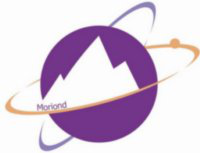Orateur
Dr
Annika Peter
(California Institute of Technology)
Description
One method to search for particle dark matter is to hunt down its annihilation products. A goal of the next generation of neutrino telescopes is to find, or better constrain, dark matter by looking for a neutrino flux from dark matter annihilation in the Sun and the Earth. Signals from both sources depend not only on the details of the dark matter model, but on the dynamics of dark matter once it becomes bound to the solar system (captured either by interactions with nuclei in the Sun or gravitational interactions with planets). Using a set of simulations of dark matter orbits in the solar system, I show that the neutrino event rate from annihilations in the Sun may be substantially smaller than currently predicted for very massive WIMPs. I demonstrate that the neutrino event rate from the Earth, while small for dark matter models consistent with experimental constraints assuming a standard dark matter halo, may be significant for the halo dark matter distributions favored by recent cosmological N-body+hydro simulations. In this case, reliably estimating dark matter parameters from the neutrino flux from the Earth will require high-precision estimates of the distribution function of dark matter bound to the solar system.
Auteur
Dr
Annika Peter
(California Institute of Technology)

